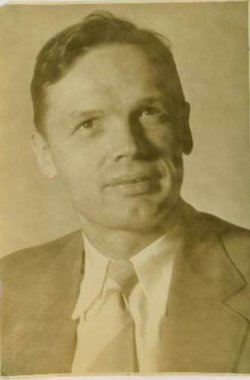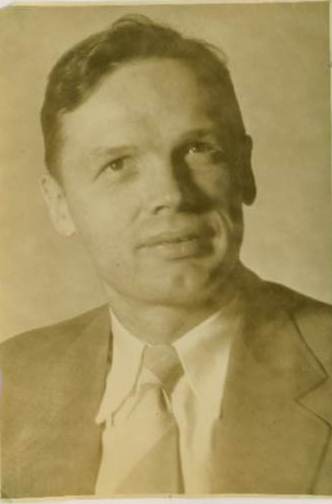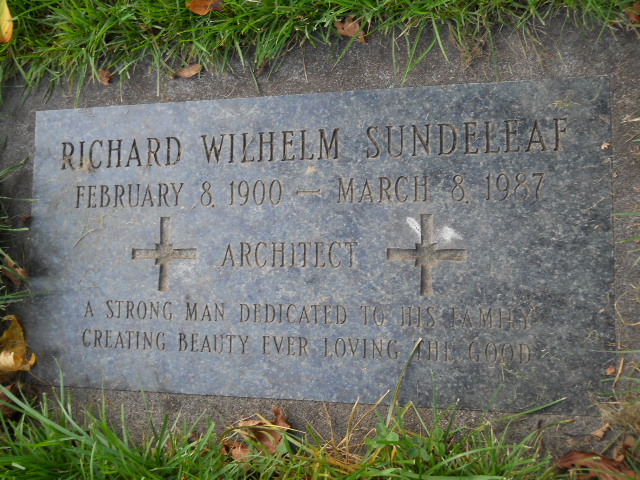The Oregonian, March 11, 1987
Architect Richard Sundeleaf dies
Richard Sundeleaf, who died Sunday, left his mark on Portland. An architect for more than 60 years, he completed more than 3,000 projects, including designs for factories, offices and hundreds of homes.
Mr. Sundeleaf, who was 87, died in his Lake Oswego home.
Born in the Goose Hollow neighborhood of Portland, he moved to the Sellwood area as a child. He graduated from Washington High School in 1918 and attended the University of Oregon, graduating from its School of Architecture in 1923.
Mr. Sundeleaf returned to Portland, where he worked for the firm of A.E. Doyle for one year. He then spent four years with the firm of Sutton and Whitney before opening his own firm in 1928. During the Great Depression, he worked for the Historic American Building Survey.
Trained in the "Beaux Arts" style of traditional design, Mr. Sundeleaf became well-known in the 1920s and '30s for his imaginative work in industrial architecture. He combined his decorative training with a rugged functionalism in a series of distinctive warehouses and offices.
In the late 1940s, he was a leading local proponent of the "Streamline Moderne" style, in which the spirit of the machine age and the concepts of aerodynamics shaped the design of the building.
His more noted public buildings include the Woodbury and Co. warehouse, 1939; the Bearing Service Co. building, 1944; the General Electric Co. building, (now Dynagraphics Inc.) 1945; the Francis and Hopikins Motors showroom, (now the University Station Post Office) 1949, the Oregon Museum of Science and Industry, 1955; and the Portland Medical Center, 1957.
He also designed many private homes throughout his career, including the house where he and his wife, Mildred, had lived since 1949. His drawings have been placed in the UO archives.
"Frozen Music," a 1985 book on the history of Portland architecture, described Mr. Sundeleaf's work: "Particularly in his industrial buildings, he breathed new life into historical forms and gave contemporary design trends the stamp of authenticity."
"Some people say that I live in the past," Mr. Sundeleaf told the authors, "But I say, the past lives in me."
Mr. Sundeleaf was an avid athlete throughout his life. He was a three-year varsity letterman in track at the University of Oregon and played handball at the Multnomah Athletic Club three times a week from 1925 to 1985. He received the club's Cebula Award in recognition of his contribution to the sport of handball.
He was a life member of the Multnomah Athletic Club and the Waverley Country Club. He was a member of Kappa Sigma fraternity.
Besides his wife, survivors include two daughters, Beverly S. Mackenzie and Karin Wright, both of Portland; four grandchildren; and two great-grandchildren.
A memorial service will be at 11 a.m. Friday in the First Presbyterian Church. Interment will be in Riverview Cemetery.
The family suggests that remembrances be contributions to the University of Oregon Foundation, Richard Sundeleaf Memorial Fund for the University of Oregon Library, P.O. Box 3346, Eugene 97403.
The Oregonian, March 11, 1987
Architect Richard Sundeleaf dies
Richard Sundeleaf, who died Sunday, left his mark on Portland. An architect for more than 60 years, he completed more than 3,000 projects, including designs for factories, offices and hundreds of homes.
Mr. Sundeleaf, who was 87, died in his Lake Oswego home.
Born in the Goose Hollow neighborhood of Portland, he moved to the Sellwood area as a child. He graduated from Washington High School in 1918 and attended the University of Oregon, graduating from its School of Architecture in 1923.
Mr. Sundeleaf returned to Portland, where he worked for the firm of A.E. Doyle for one year. He then spent four years with the firm of Sutton and Whitney before opening his own firm in 1928. During the Great Depression, he worked for the Historic American Building Survey.
Trained in the "Beaux Arts" style of traditional design, Mr. Sundeleaf became well-known in the 1920s and '30s for his imaginative work in industrial architecture. He combined his decorative training with a rugged functionalism in a series of distinctive warehouses and offices.
In the late 1940s, he was a leading local proponent of the "Streamline Moderne" style, in which the spirit of the machine age and the concepts of aerodynamics shaped the design of the building.
His more noted public buildings include the Woodbury and Co. warehouse, 1939; the Bearing Service Co. building, 1944; the General Electric Co. building, (now Dynagraphics Inc.) 1945; the Francis and Hopikins Motors showroom, (now the University Station Post Office) 1949, the Oregon Museum of Science and Industry, 1955; and the Portland Medical Center, 1957.
He also designed many private homes throughout his career, including the house where he and his wife, Mildred, had lived since 1949. His drawings have been placed in the UO archives.
"Frozen Music," a 1985 book on the history of Portland architecture, described Mr. Sundeleaf's work: "Particularly in his industrial buildings, he breathed new life into historical forms and gave contemporary design trends the stamp of authenticity."
"Some people say that I live in the past," Mr. Sundeleaf told the authors, "But I say, the past lives in me."
Mr. Sundeleaf was an avid athlete throughout his life. He was a three-year varsity letterman in track at the University of Oregon and played handball at the Multnomah Athletic Club three times a week from 1925 to 1985. He received the club's Cebula Award in recognition of his contribution to the sport of handball.
He was a life member of the Multnomah Athletic Club and the Waverley Country Club. He was a member of Kappa Sigma fraternity.
Besides his wife, survivors include two daughters, Beverly S. Mackenzie and Karin Wright, both of Portland; four grandchildren; and two great-grandchildren.
A memorial service will be at 11 a.m. Friday in the First Presbyterian Church. Interment will be in Riverview Cemetery.
The family suggests that remembrances be contributions to the University of Oregon Foundation, Richard Sundeleaf Memorial Fund for the University of Oregon Library, P.O. Box 3346, Eugene 97403.
Inscription
RICHARD WILHELM SUNDELEAF
FEBRUARY 8 1900 -- MARCH 8, 1987
ARCHITECT
A STRONG MAN DEDICATED TO HIS FAMILY
CREATING BEAUTY EVER LOVING THE GOOD
Family Members
Sponsored by Ancestry
Advertisement
Records on Ancestry
Advertisement














